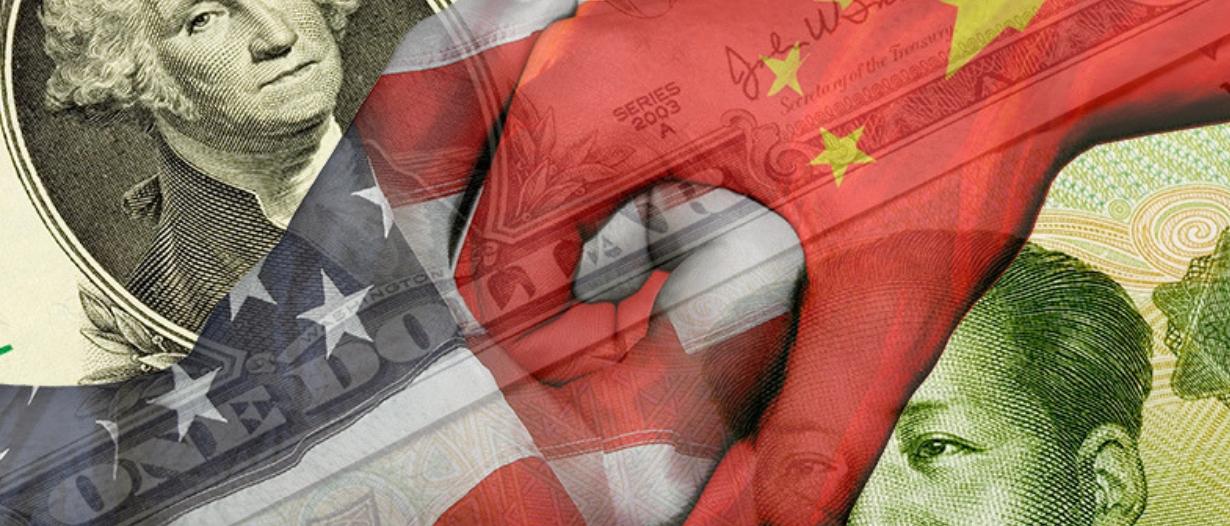The Federal Reserve (FED) cuts interest rate by 25 basis points, lowering the target range for the federal funds rate to between 2% and 2.25%, which was the first cut by the FED since December 2008. This move by the Federal Reserve not only means the end of the Dollar rate cycle started in December 2015 but also means entering a new Dollar rate cut cycle. At the same time, Trump has labelled China as a currency manipulator, which adds to the pressure on the two countries to reconcile in the trade war. The U.S. actions add uncertainty to the global economy, and the trade war could possibly turn into a currency war.
Cutting interest rate: Insurance Against U.S. Economic Growth
The Federal Reserve believes the U.S. may be at the mid-cycle adjustment instead of the end of the economic cycle. Under the Sino-US trade war, China and the U.S. have both suffered from the significant impact brought by the conflict. The Fed expects lowering interest rate may relieve the pressure on and ensure the growth of the U.S. economy.
- Curbing the rise of the dollar to strengthen U.S. power in the global trade war
- Prevent potential economic deterioration to ensure U.S. economic growth
Since 2018, trump has repeatedly provoked trade conflicts by imposing tariffs. These trade conflicts continue to hit all walks of life in the United States. Tariffs continue to threaten small and medium-sized American enterprises and downstream manufacturing jobs, forcing enterprises to bear more costs.
At the same time, enterprises are forced to raise prices, and sales revenue decreases, which will lead to the decline of state and county sales tax, and the reduction of federal and state income tax, and then forced to cut social security expenditure, affecting long-term economic growth. In order to limit the enterprise’s cost to continue the expansion of the U.S. economy and to reduce the negative impact on American industry due to the trade war, the Fed cuts the interest rate so that the rise of dollar gains eased.
Factors that drive the Fed’s interest rate cuts
The pace of the Fed’s rate cuts is driven mainly by two indicators: unemployment and core inflation. The main difference between the rate cut this time and the previous rate cuts is that these two indicators are not bad data.
The federal reserve’s estimate of natural unemployment is 4.6% at 2019 Q3 while the unemployment rate for July 2019 is 3.7%, which is lower than the natural unemployment rate. That is to say, America’s unemployment rate is lower than its long-term natural rate. In these circumstances, the economy as a whole is at full employment, and output is likely to be above long-run equilibrium and stimulating the economy may, in turn, lead to bubbles.
Though the core inflation rate is 2.21% 2019, lower than the long term average 3.36% and the core inflation rate of 2.13% last year, the economy is not weak enough for the federal reserve to justify cutting interest rates.
So the Fed’s interest rate cuts are more about insuring the US economy. The Federal Reserve cuts interest rates before the economy slow to avoid a rapid slowdown. Just as what Fed chairman Bowell said at the news conference, the Fed’s rate cut is intended to head off downside risks from slowing global growth and trade policy uncertainty, help offset those headwinds on the US economy and push the US inflation back to its 2 per cent target more quickly.
Future with foreseeable challenges
On August 5th, the U.S. Treasury Department has named China a currency manipulator in a statement on its website. It was the second time in 25 years that the United States labelled a country as a currency manipulator since July 1994. There are two main possible reasons for this.
- The Yuan depreciated sharply on the 5th of August. The onshore RMB exchange rate closed at 7.0507 on the 5th of August, down 1.56% from the previous close of 6.9405
- The People’s Bank of China(PBOC) was seen by the US government that it has extensive experience in currency manipulation and is still preparing to do so
PBOC said in a statement on the 5th of August that it had “accumulated a wealth of experience and policy tools, and will continue to innovate and enrich its control toolbox and take necessary and targeted measures in response to possible positive feedback in the foreign exchange market”, which by the U.S. as “Chinese authorities acknowledge that their central bank has full control over the RMB exchange rate”.
Combined with the current Dollar rate cut cycle, this action may been seen as a signal of the turning point of a new stage of the Sino-US trade war. Irreversible consequences may be made.
- Major central banks all over the world are likely to cut interest rate, which leads to huge inflation and stunted economic growth
- The dollar is stronger but some countries are under more pressure to export and the overflow of us dollars in the capital market helps some countries to absorb us dollar capital
- The Fed’s rate cut gives China’s monetary policy more room to maneuver
- As the bubble in the U.S. economy grows, monetary policy may become more aggressive in the future
As an important currency in international transactions, the US dollar has been painstakingly linked to oil. Most international oil trade needs to be settled in USD, so it is not expected that the exchange rate of the US dollar will change significantly in a short time. So it is less likely that the trade war will turn into a currency war, and more likely that there will be minor currency fluctuations. But for most investors and ordinary people in both countries, rising price and unemployment rate seems to be an inevitable issue to face especially during the China bubble economic cycle, uncertainty and potential risk may deepen.





























